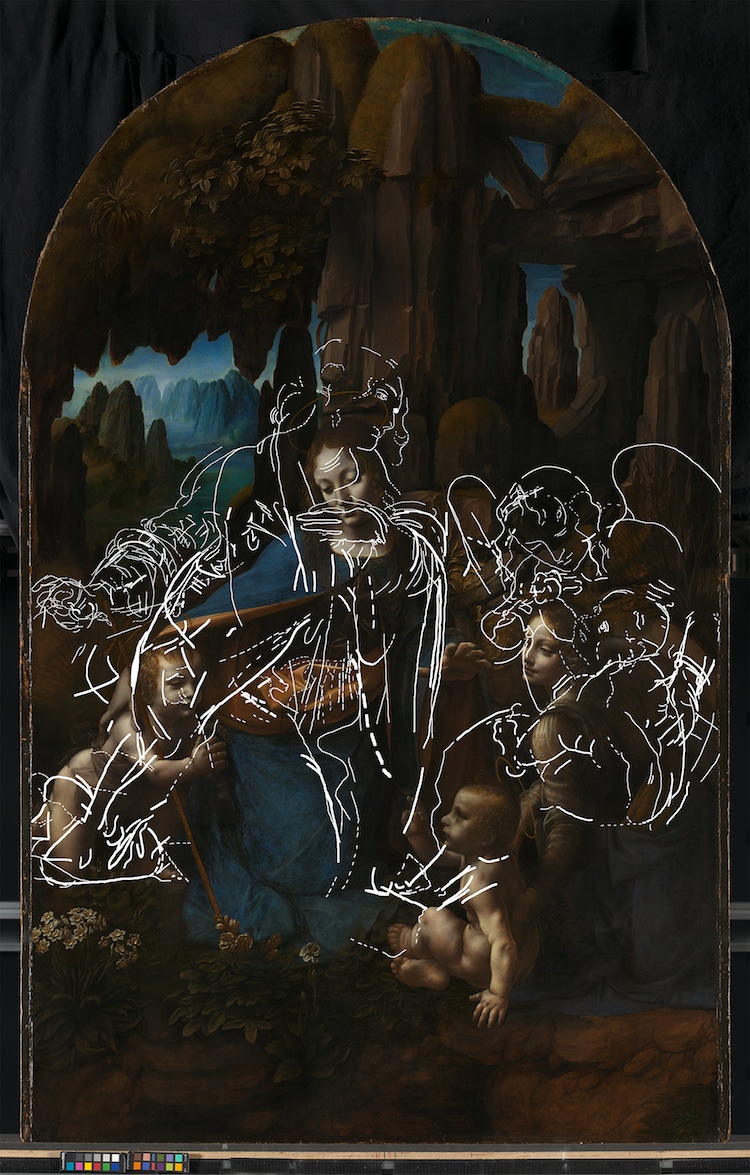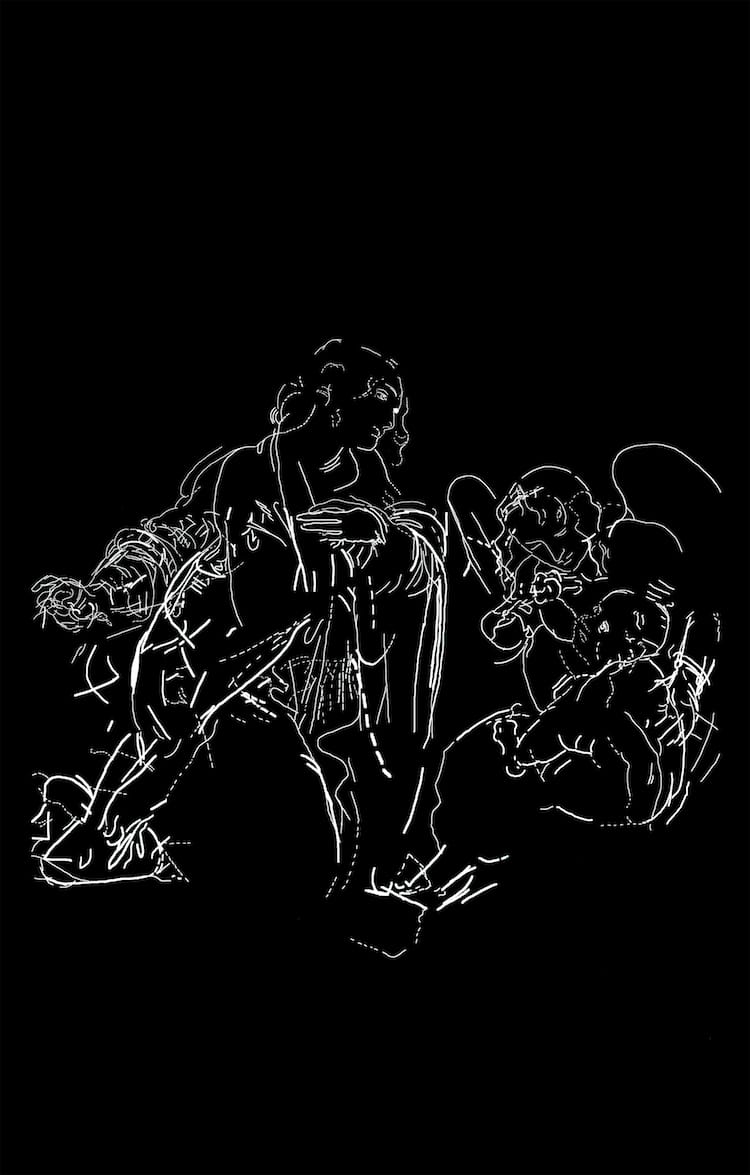
Leonardo da Vinci (1452 – 1519) “
Virgin of the Rocks” – tracing of the lines relating to underdrawing for the first composition, incorporating information from all technical images
© The National Gallery, London
London's National Gallery of Art boasts a world-class collection of art. In addition to paintings by iconic Impressionist artists and legendary English landscape painters, the museum houses many works by Renaissance masters, like Leonardo da Vinci's Virgin of the Rocks. Since acquiring the panel painting in 1880, the museum has considered it a highlight of its collection. In recent years, however, this priceless painting has become even more precious, as the gallery has discovered there's much more than meets the eye.
During an 18-month restoration of the painting in 2008, conservators at the National Gallery of Art uncovered a pair of drawings hidden beneath the visible layers of oil paint. More recently, however, they've been able to see them in much greater detail. Rendered in a a zinc-based pigment, the sketches were detected by cutting-edge tools and techniques employed by the museum. These include macro X-ray fluorescence, which non-invasively maps out the surface of a painting, and hyperspectral imaging, which shows the spectrum present in an image's pixels. Together, these technologies proved that Leonardo's vision for Virgin of the Rocks drastically evolved during the painting process.
While one drawing simply shows a shift in the positioning of baby Jesus' head, another reveals that, at one point, Leonardo considered an entirely different composition. Rather than feature Jesus to the right of his mother, the earlier draft shows the infant in the arms of the angel on her left. Though Mary looks at her child in both cases, her gaze is different in each one. In the first version, she appears to be in awe of the young holy figure; however, in the finished painting, she looks on with a more maternal expression.
In addition to these underdrawings, restoration efforts also revealed another hidden gem: a handprint. Both of these discoveries are currently in the spotlight thanks to Leonardo: Experience a Masterpiece, an upcoming exhibition at the National Gallery. Opening on November 9, 2019, this spectacle will transform the ground floor of the gallery into four immersive spaces: the mind of Leonardo, a painting studio, a “light and shadow experiment,” and a chapel. By exploring these engaging spaces, visitors will be able to get up-close and personal with the painting in order to see it in a new light.
“This exhibition represents a fascinating new venture for the National Gallery, combining the most recent technical research on the Virgin of the Rocks with an immersive, enveloping experience,” Dr.Gabriele Finaldi (the director of the National Gallery) says, “giving visitors the opportunity to explore Leonardo da Vinci's creative process in making this masterpiece.”
Leonardo: Experience a Masterpiece will be on view from November 9, 2019 through January 12, 2020.
Did you know that there are drawings hidden underneath Leonardo's Virgin of the Rocks?

Leonardo da Vinci (1452 – 1519), “
The Virgin with the Infant Saint John the Baptist adoring the Christ Child accompanied by an Angel” (“The Virgin of the Rocks”)
Short title: “The Virgin of the Rocks,”
about 1491/2-9 and 1506-8.
Oil on poplar, thinned and cradled
189.5 x 120 cm
© The National Gallery, London
One of these secret sketches shows that Leonardo originally had a different composition in mind.

Leonardo da Vinci (1452 – 1519) “
Virgin of the Rocks” – tracing of the lines relating to underdrawing for the first composition, incorporating information from all technical images
© The National Gallery, London

Tracing of the lines relating to underdrawing for the first composition, incorporating information from all technical images
© The National Gallery, London
The drawings were rendered in a zinc-based pigment, which allowed them to be picked up by techniques like macro X-ray fluorescence mapping and hyperspectral imaging.

Detail from hyperspectral imaging data, revealing the drawing for the angel and baby of the first composition (under the landscape at the right side of the painting)
© The National Gallery, London

Macro XRF map showing distribution of zinc revealing angel and baby of the first composition (under the landscape at the right side of the painting)
© The National Gallery, London
These technologies also make it easy to find other hidden gems, like this handprint!

“Virgin of the Rocks” – raking light detail of the Virgin’s eye and cheek including the palm print in the priming layer
© The National Gallery, London
The National Gallery of Art: Website | Facebook | Instagram | Twitter | YouTube
My Modern Met granted permission to feature photos by the National Gallery of Art.
Related Articles:
Modern Technology Reveals a Hidden Painting Underneath Picasso’s ‘The Blue Room’
8 Famous Artists’ Studios You Can Visit Today
Art Conservator Skillfully Restores a Damaged and Dirty 19th-Century Painting






















































































